
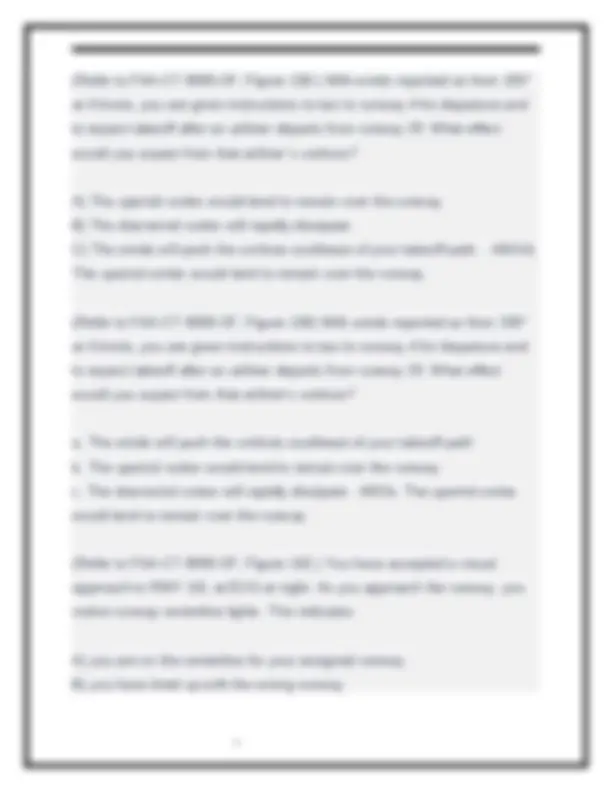
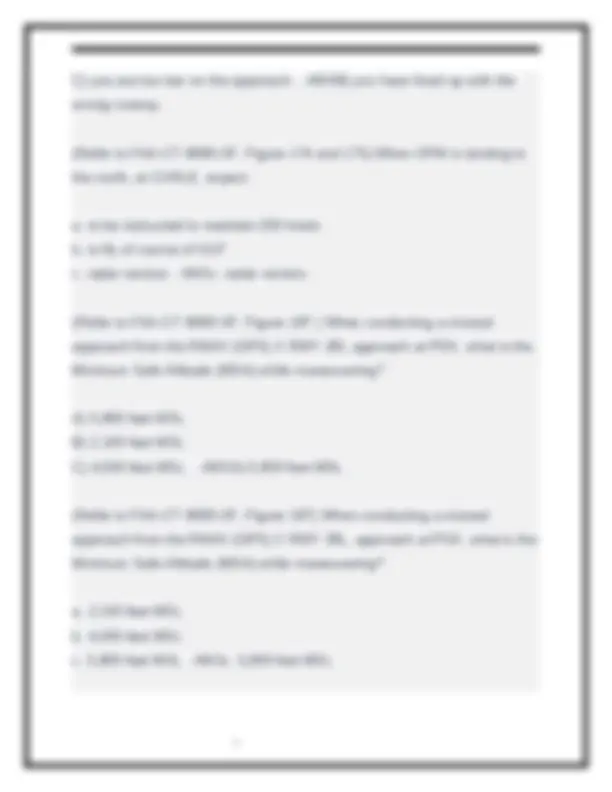
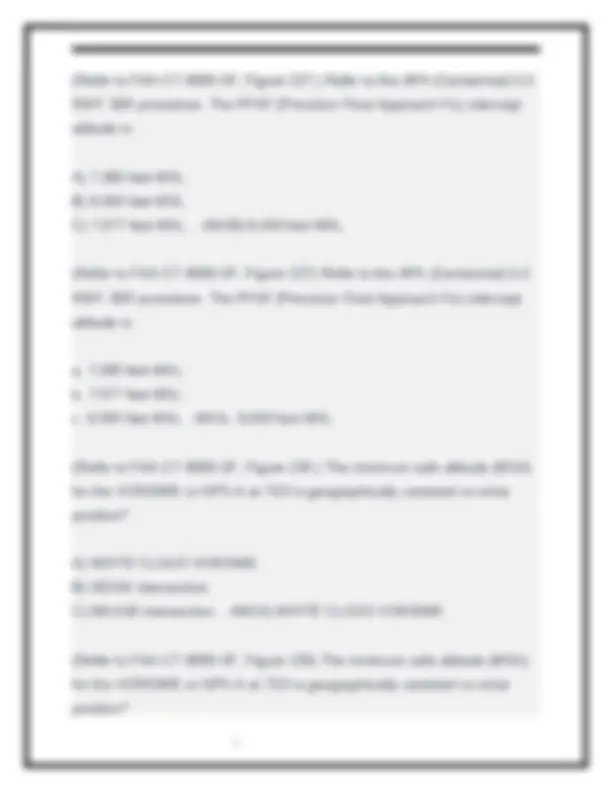
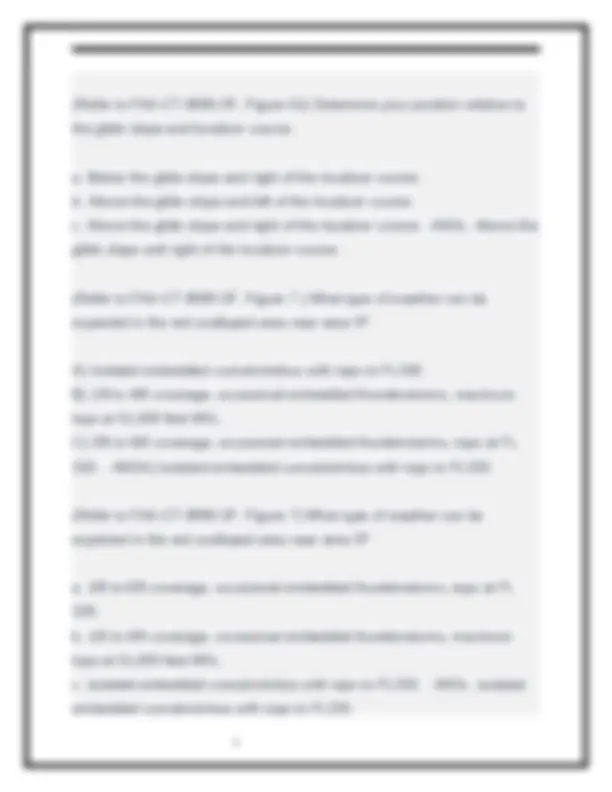
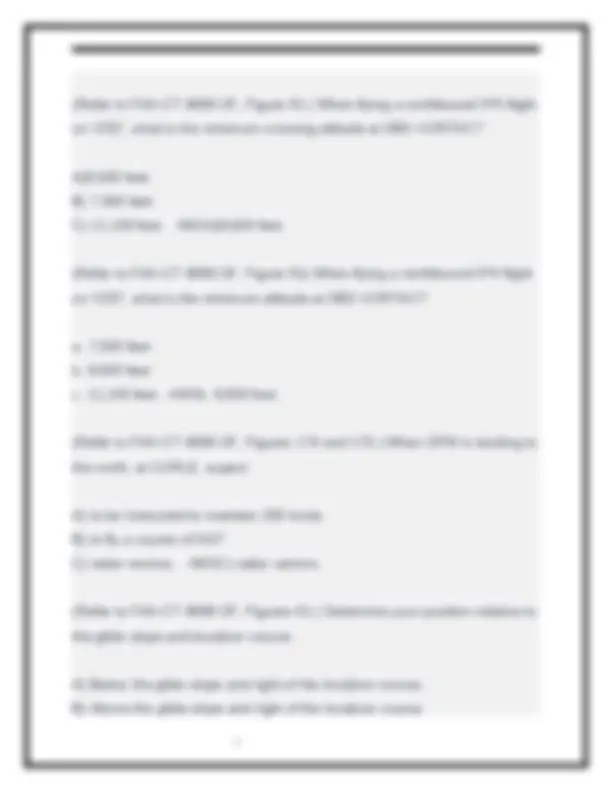
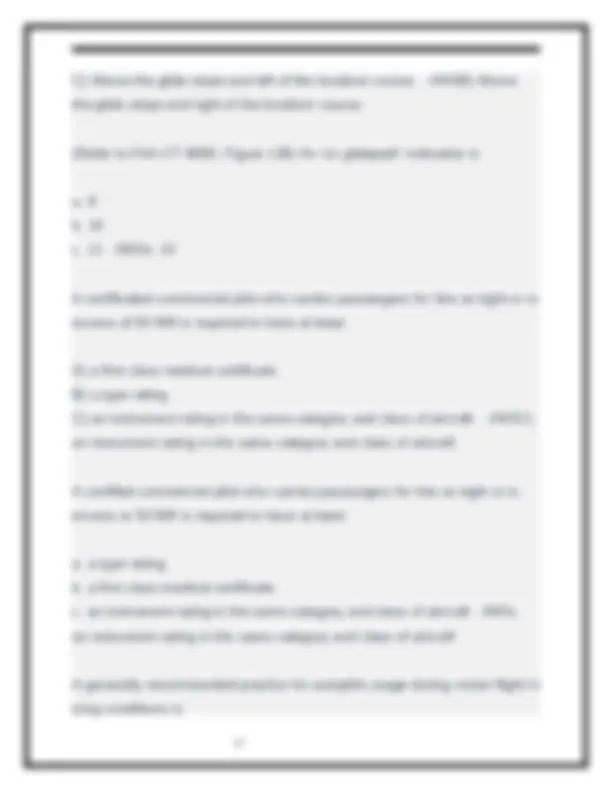
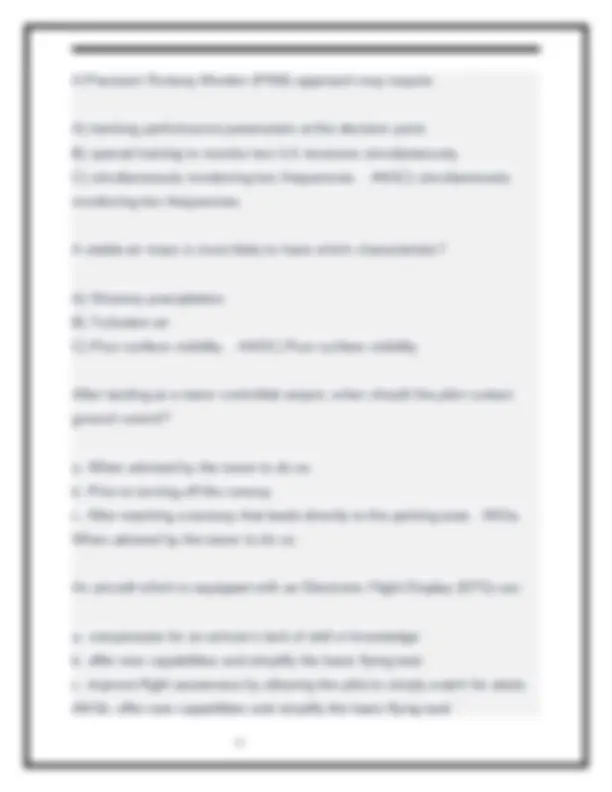
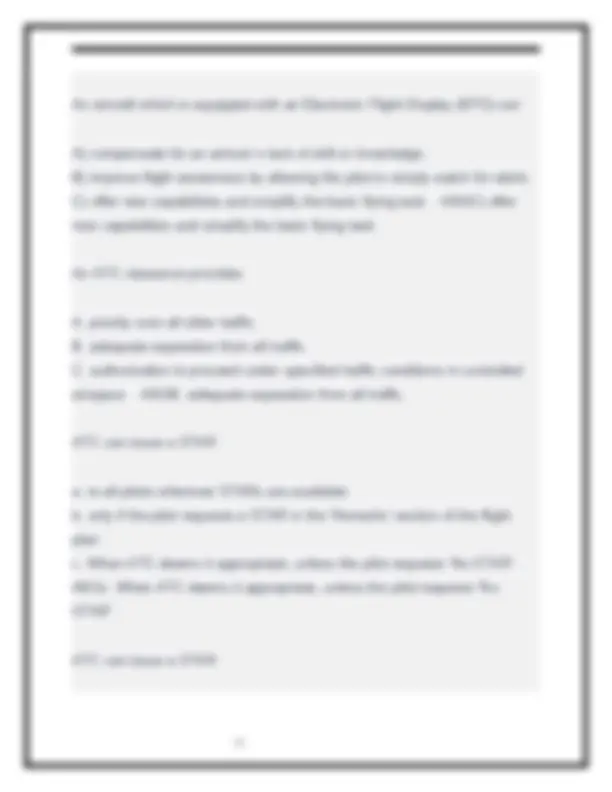
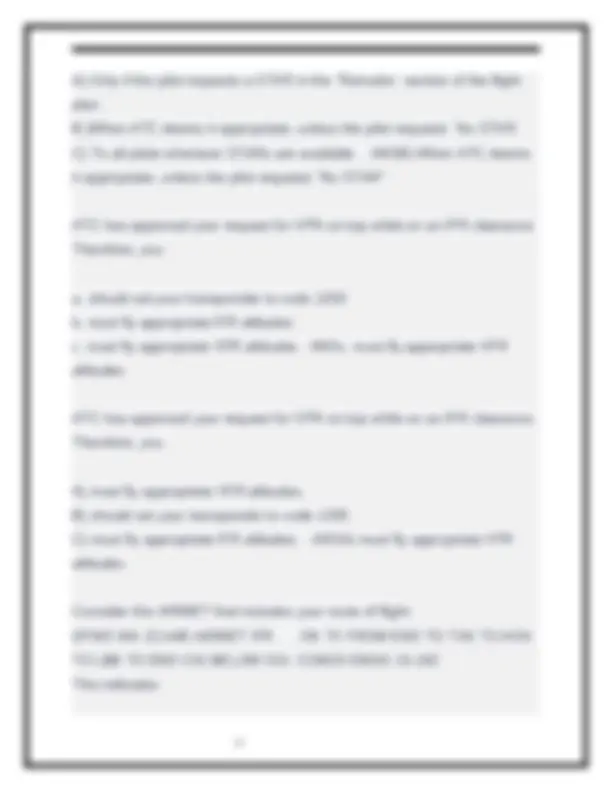
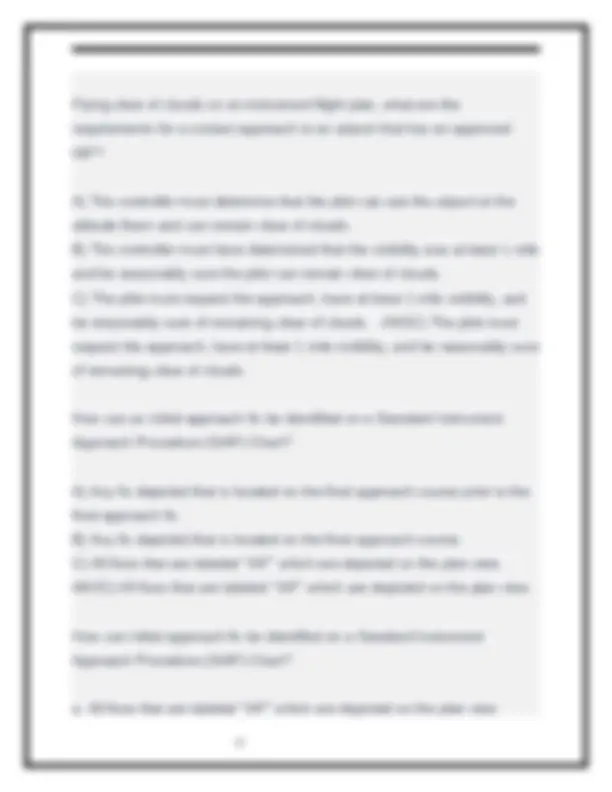
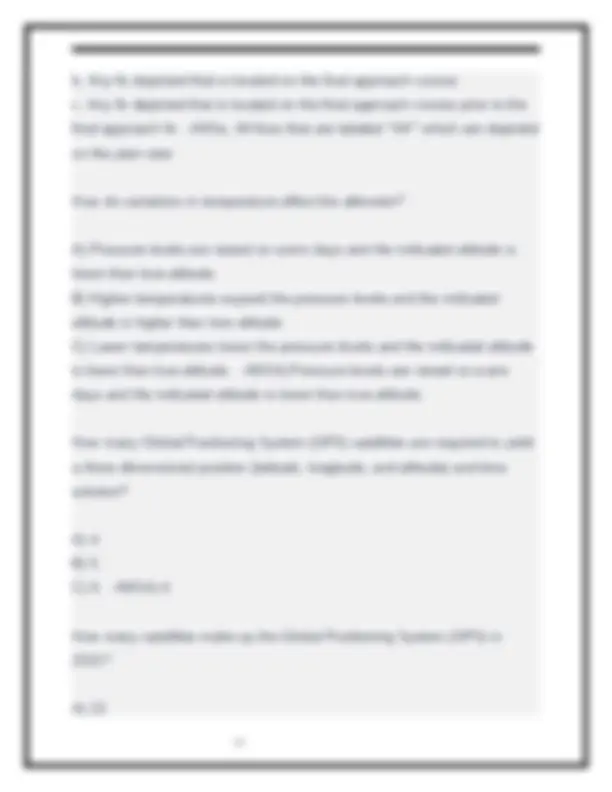

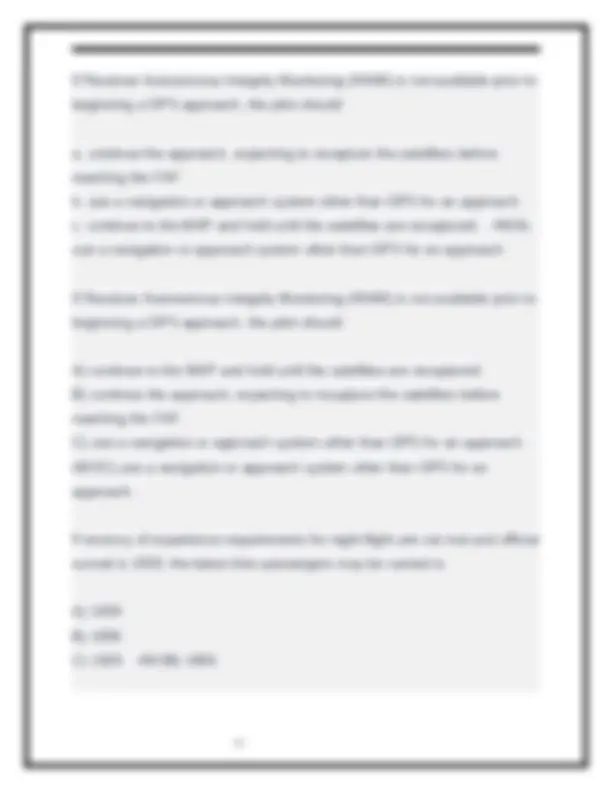



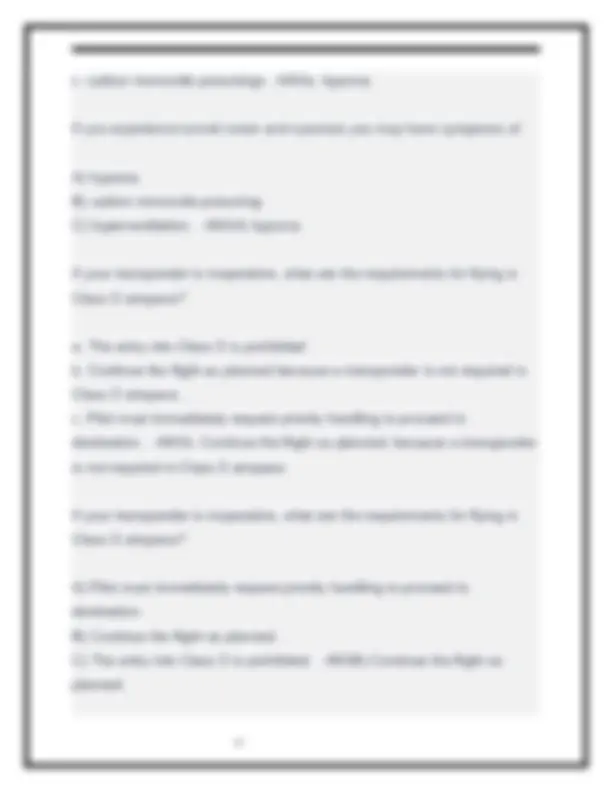
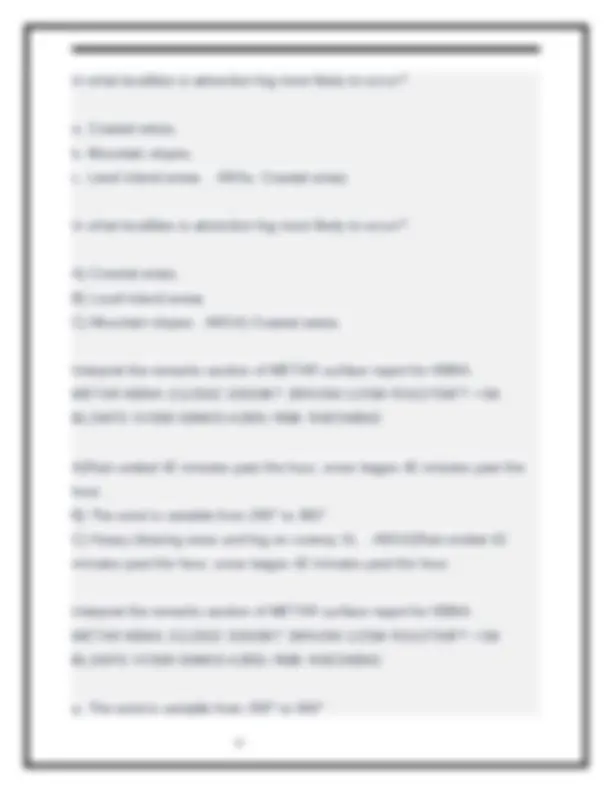
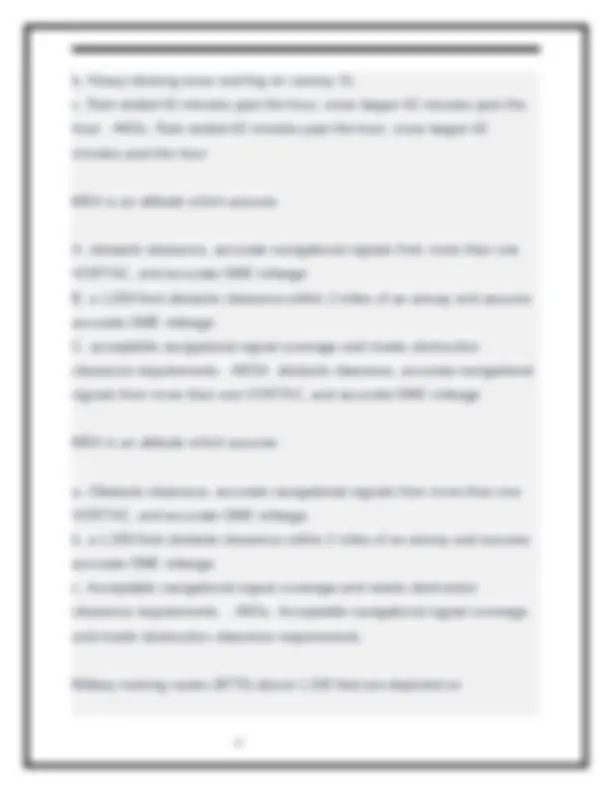
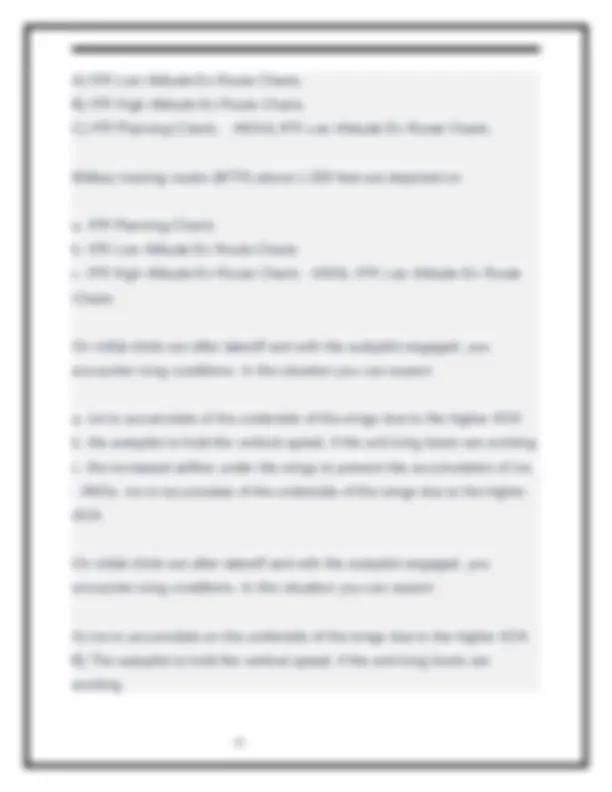
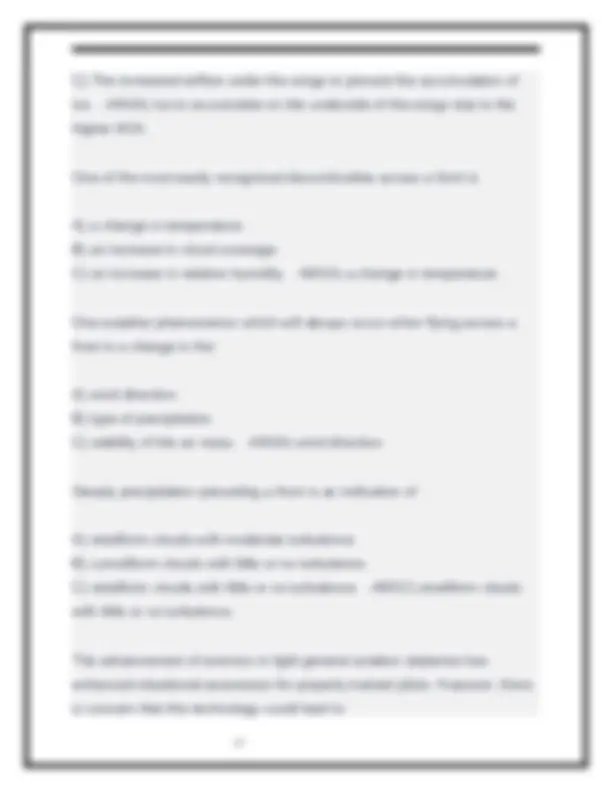
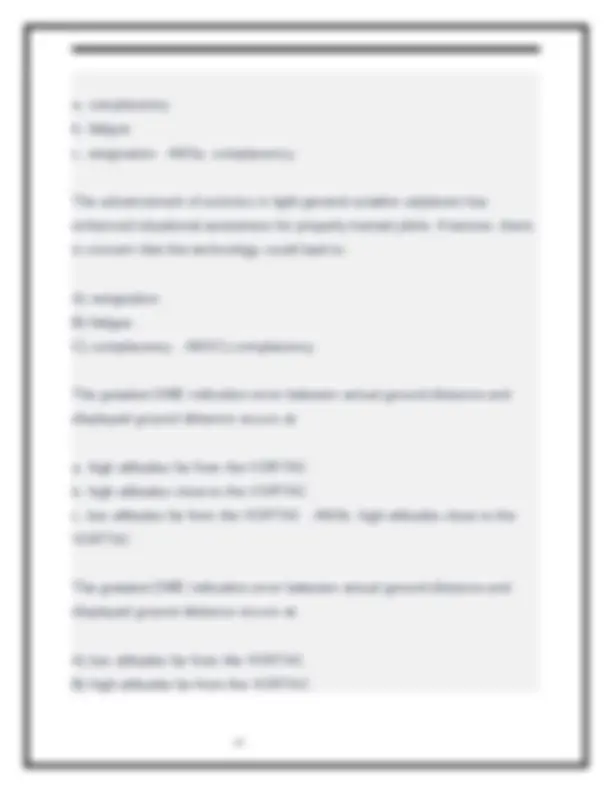
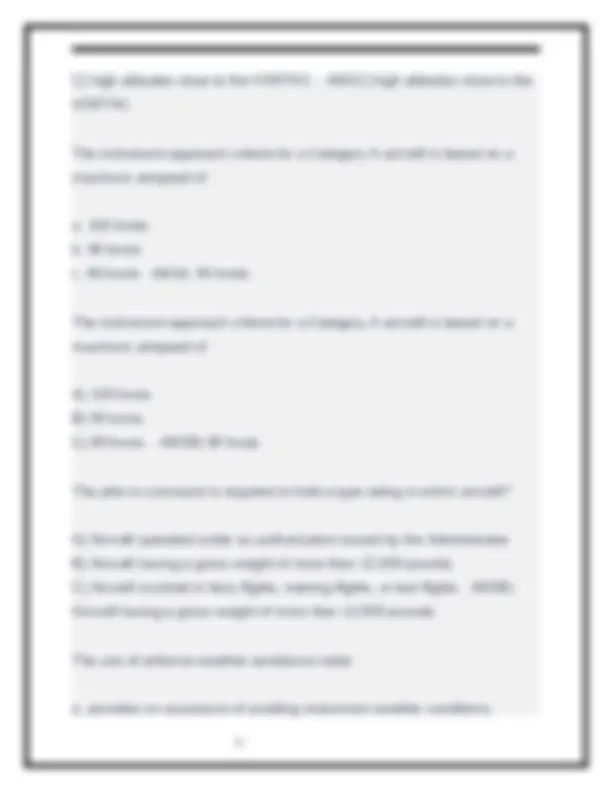
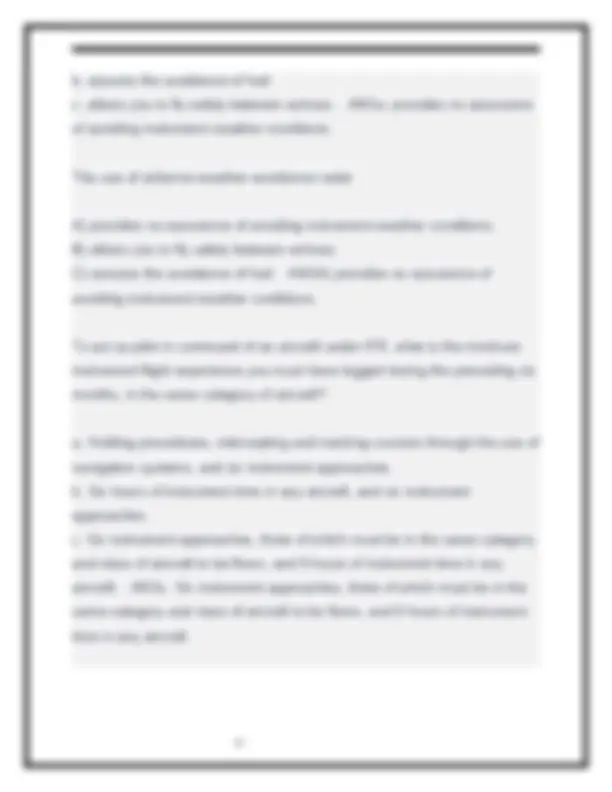
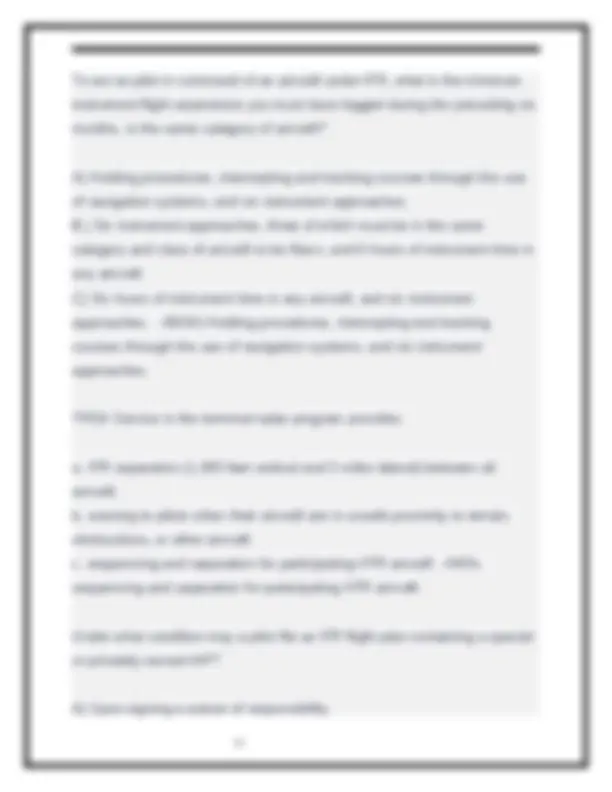
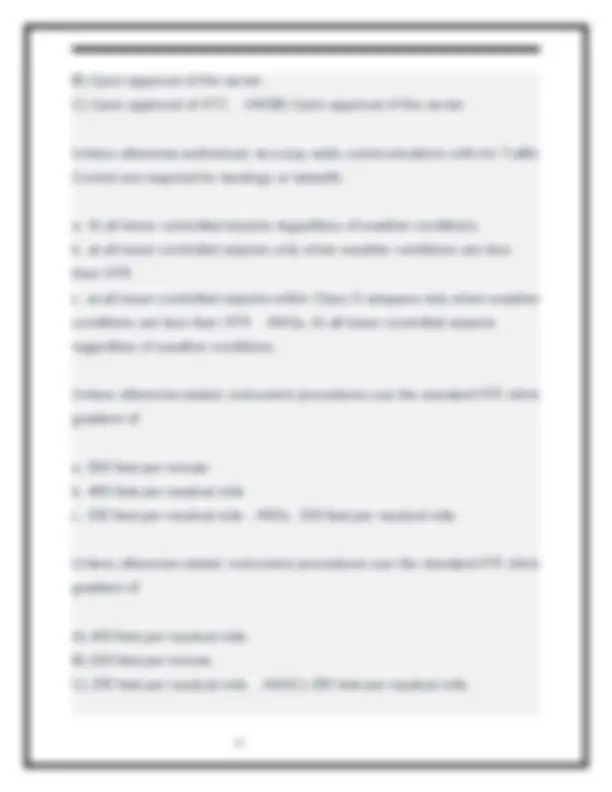
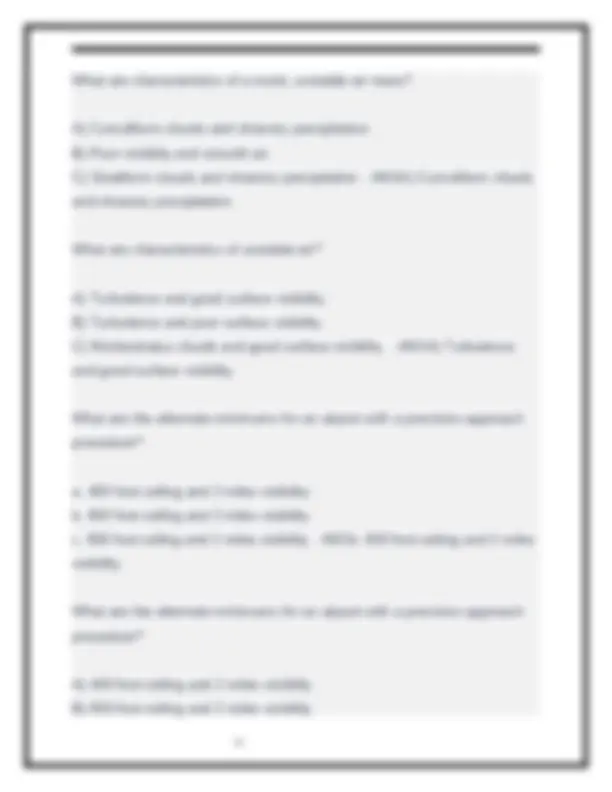
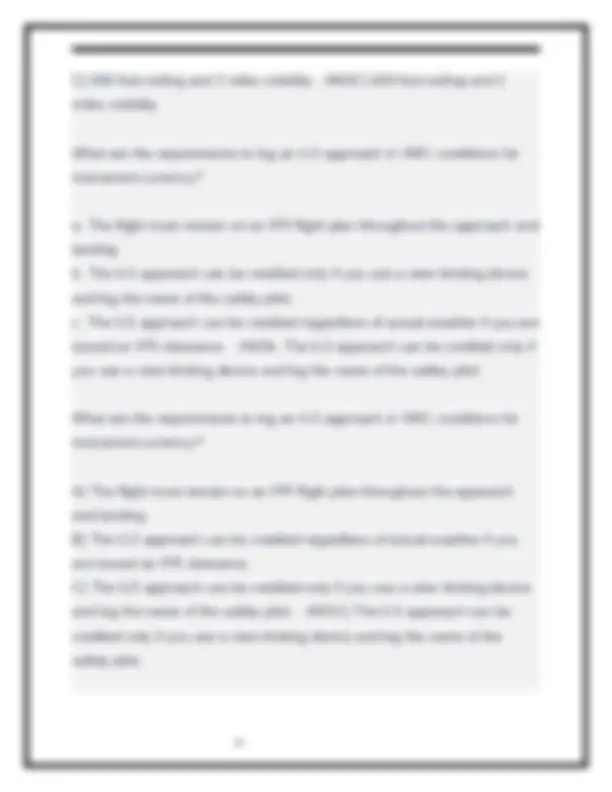
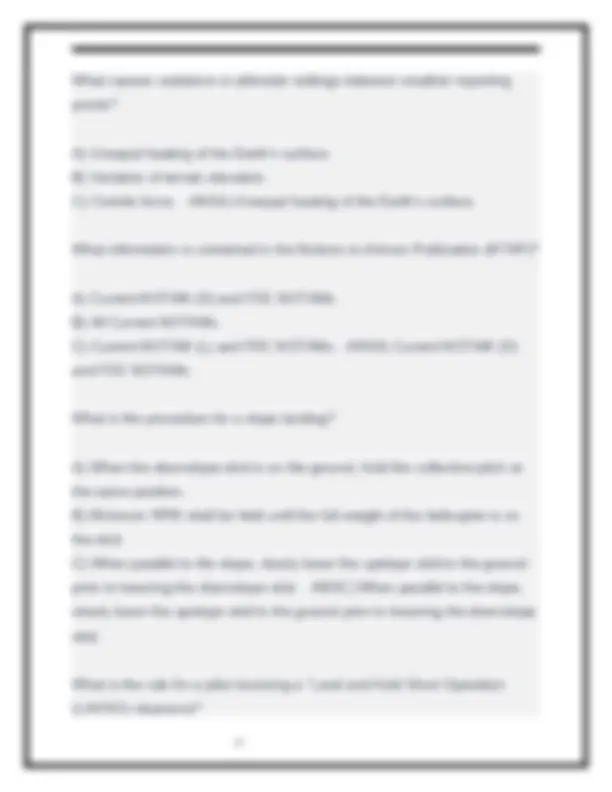
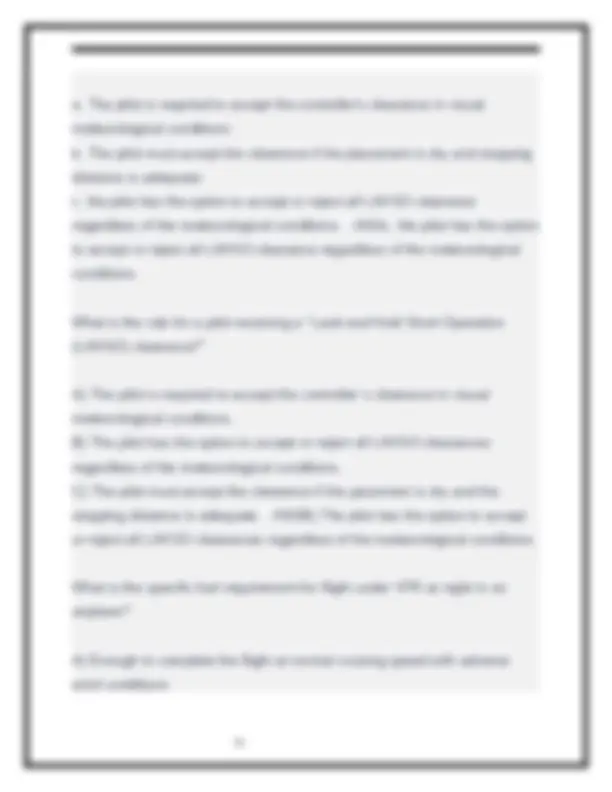
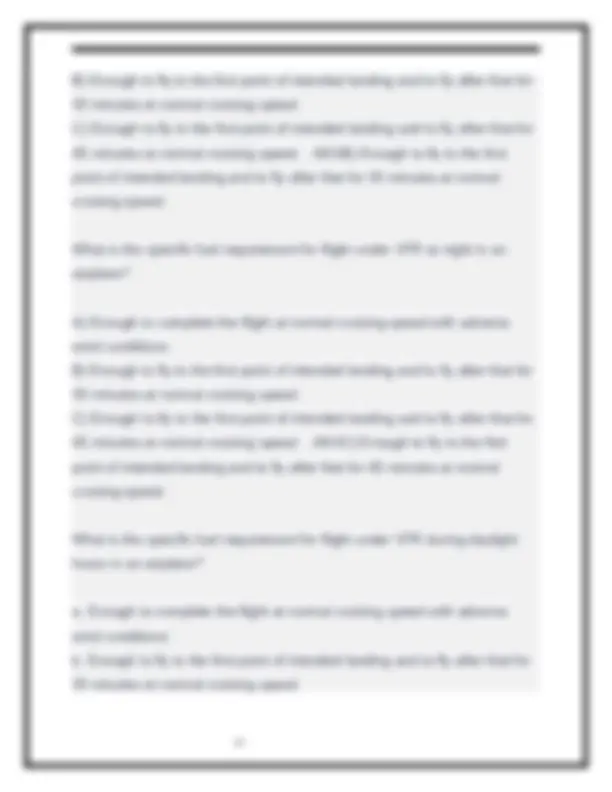
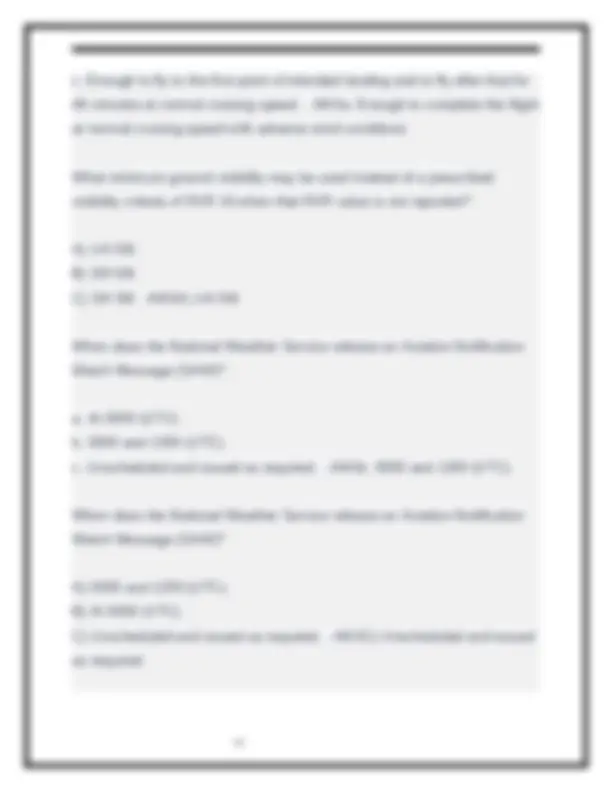
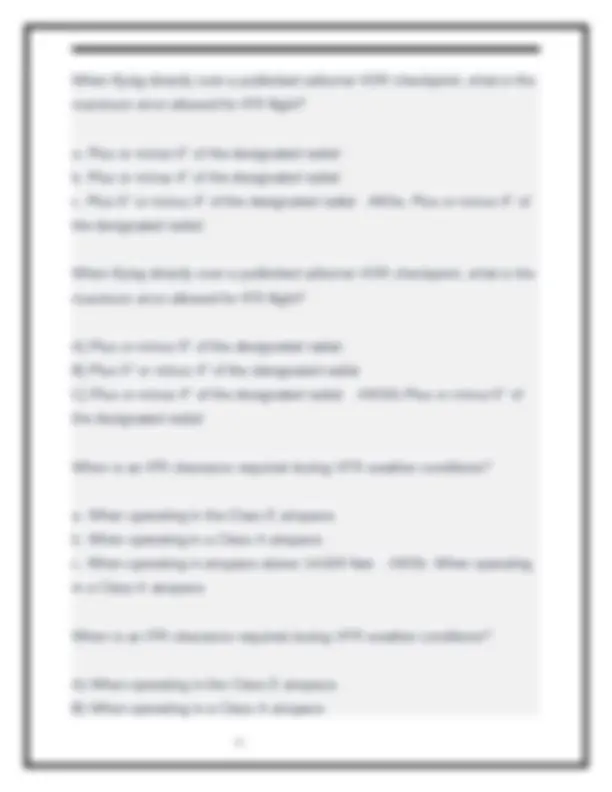
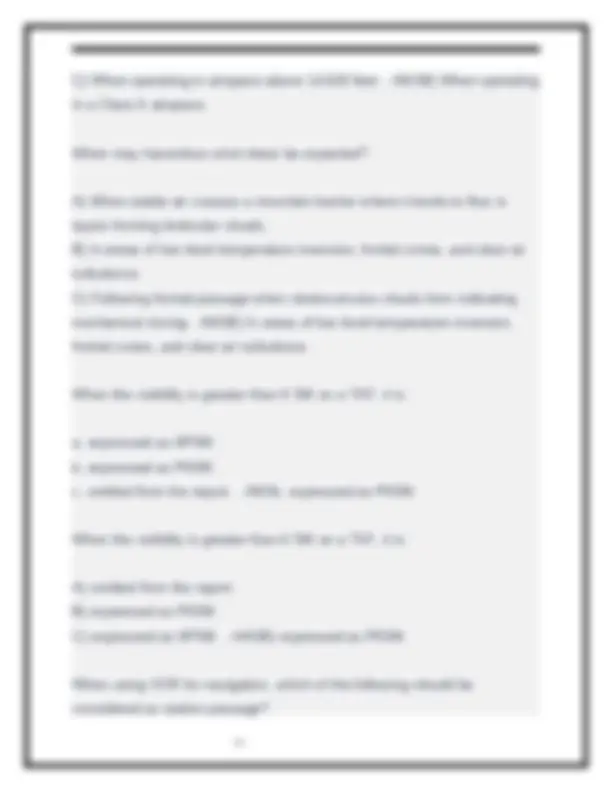
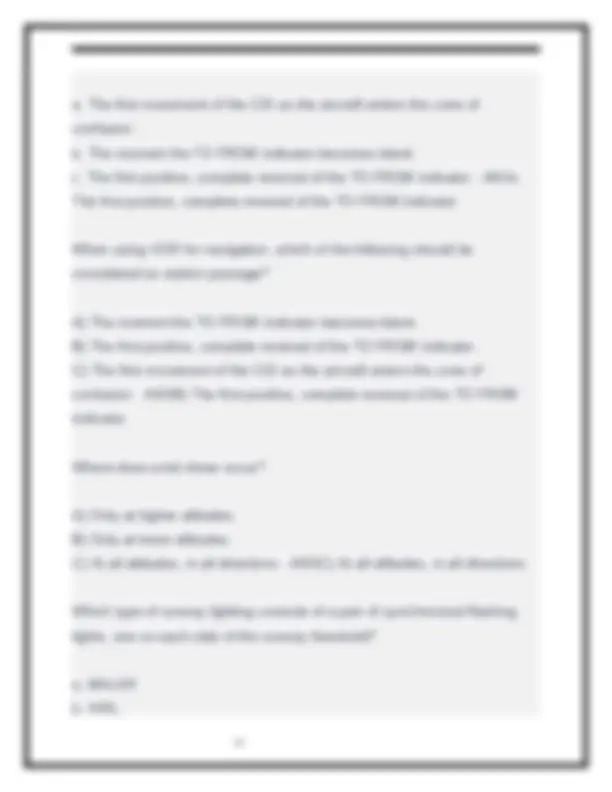
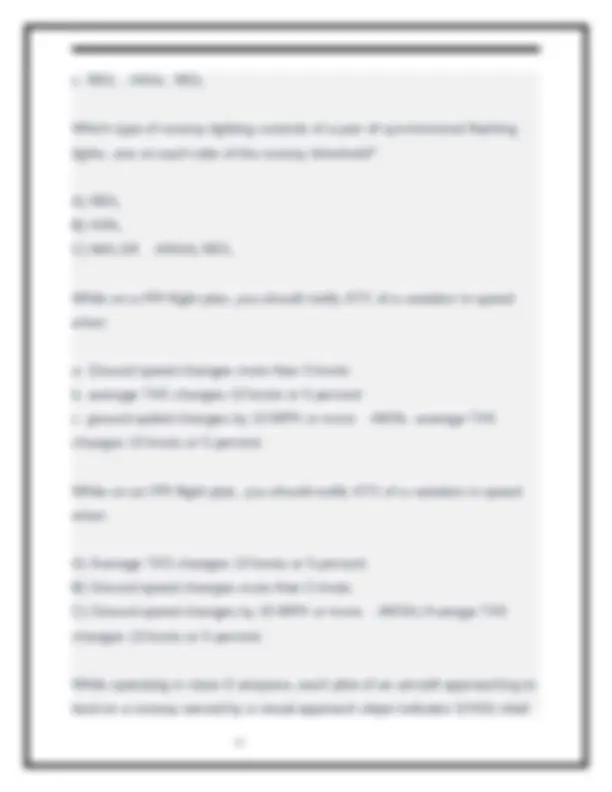
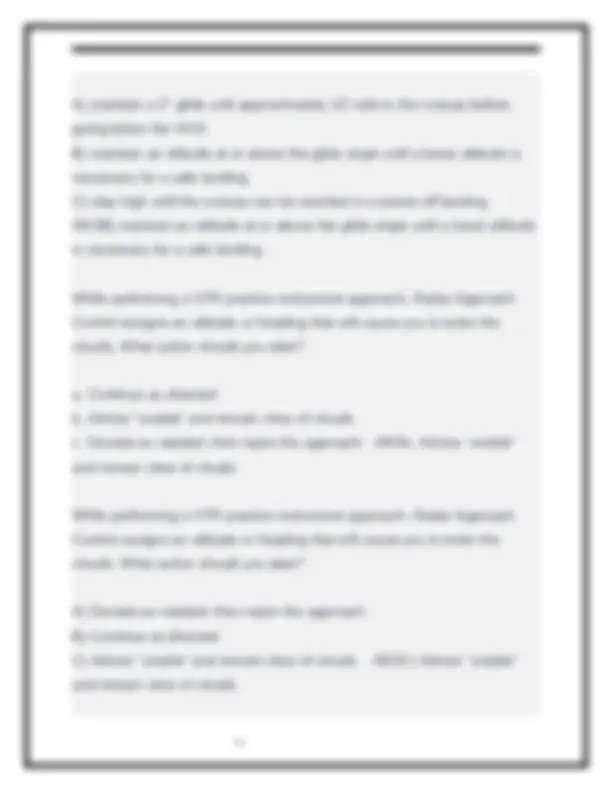
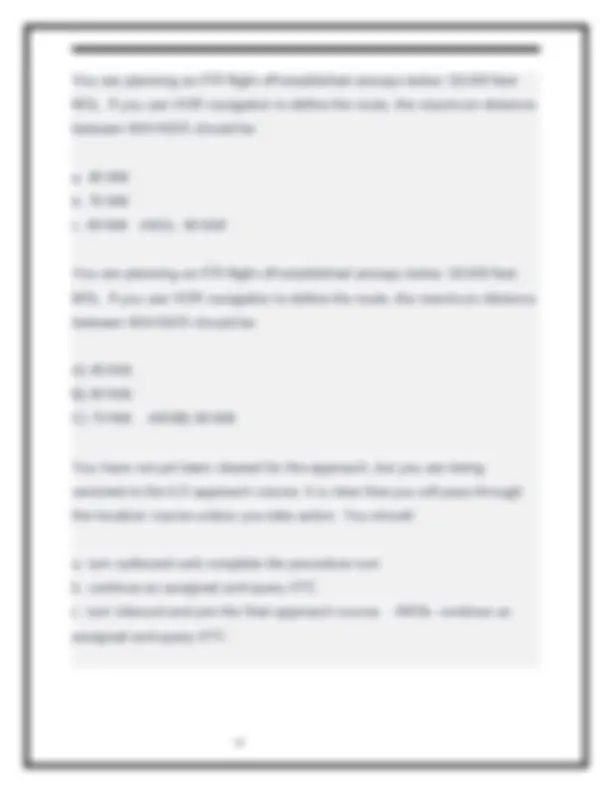
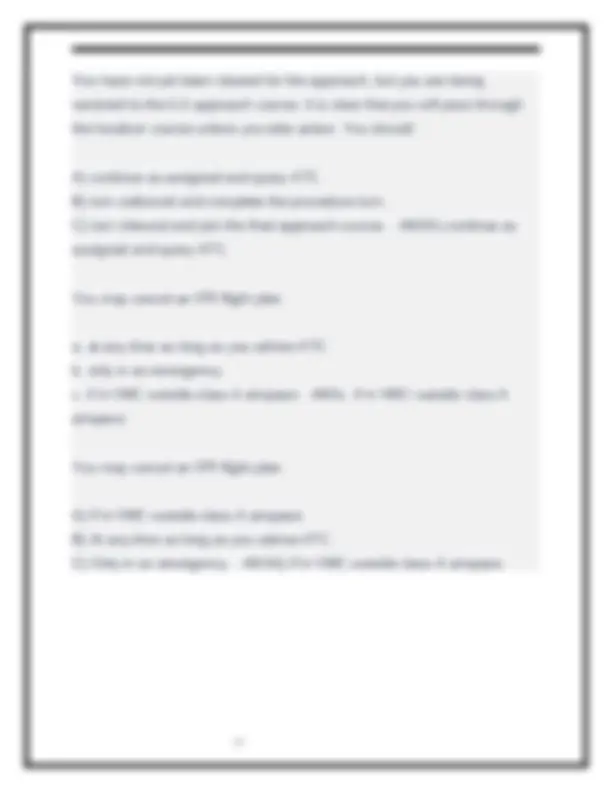


Study with the several resources on Docsity

Earn points by helping other students or get them with a premium plan


Prepare for your exams
Study with the several resources on Docsity

Earn points to download
Earn points by helping other students or get them with a premium plan
Community
Ask the community for help and clear up your study doubts
Discover the best universities in your country according to Docsity users
Free resources
Download our free guides on studying techniques, anxiety management strategies, and thesis advice from Docsity tutors
Instrument Rating Written FAA Test Quiz Latest Edition 2025-2026. Questions & Correct Answers (Updated). Graded A
Typology: Exams
1 / 47

This page cannot be seen from the preview
Don't miss anything!








































(Refer to appendix 2, figure 118A.) The touchdown zone elevation of the LOC BC RWY 26L approach at Phoenix Sky Harbor Intl is A) 1,123 feet. B) 1,130 feet. C) 1,640 feet. - ANSA) 1,123 feet. (Refer to appendix 2, figure 122, and appendix 1, legend 9.) What is the approximate rate of descent required (for planning purposes) to maintain the electronic glide slope at 120 KIAS with a reported headwind component of 15 knots? A) 635 ft/min. B) 650 ft/min. C) 555 ft/min. - ANSC) 555 ft/min. (Refer to appendix 2, figures 202 and 206.) PTL 55 received the following clearance from Bay Approach Control. PTL 55 is cleared ILS RWY 19L at SFO, sidestep to RWY 19R. 1.3 times the Vso speed, of PTL 55, is 165 knots. What is the lowest minimum descent altitude (MDA) and the lowest visibility that PTL 55 may accomplish the sidestep?
(Refer to FAA-CT-8080-3F, Figure 13.) How will the aircraft in position 4 be affected by a microburst encounter? A) Performance decreasing with a headwind and downdraft. B)Performance decreasing with a tailwind and downdraft. C) Performance increasing with a tailwind and updraft. - ANSB)Performance decreasing with a tailwind and downdraft. (Refer to FAA-CT-8080-3F, Figure 13) How will the aircraft in position 4 be affected by a microburst encounter? a. Performance increasing with a tailwind and updraft. b. Performance decreasing with a tailwind and downdraft. c. Performance decreasing with a headwind and downdraft. - ANSb. Performance decreasing with a tailwind and downdraft. (Refer to FAA-CT-8080-3F, Figure 136.) An on glidepath indication is A) 10 B) 8 C) 11 - ANSA) 10
C) you are too low on the approach. - ANSB) you have lined up with the wrong runway. (Refer to FAA-CT-8080-3F, Figure 174 and 175) When DFW is landing to the north, at CURLE, expect a. to be instructed to maintain 200 knots b. to fly of course of 010° c. radar vectors - ANSc. radar vectors (Refer to FAA-CT-8080-3F, Figure 187.) When conducting a missed approach from the RNAV (GPS) X RWY 28L approach at PDX, what is the Minimum Safe Altitude (MSA) while maneuvering? A) 5,800 feet MSL. B) 2,100 feet MSL. C) 4,000 feet MSL. - ANSA) 5,800 feet MSL. (Refer to FAA-CT-8080-3F, Figure 187) When conducting a missed approach from the RNAV (GPS) X RWY 28L, approach at PDX, what is the Minimum Safe Altitude (MSA) while maneuvering? a. 2,100 feet MSL b. 4,000 feet MSL c. 5,800 feet MSL - ANSc. 5,800 feet MSL
(Refer to FAA-CT-8080-3F, Figure 227.) Refer to the APA (Centennial) ILS RWY 35R procedure. The PFAF (Precision Final Approach Fix) intercept altitude is A) 7,080 feet MSL. B) 8,000 feet MSL. C) 7,977 feet MSL. - ANSB) 8,000 feet MSL. (Refer to FAA-CT-8080-3F, Figure 227) Refer to the APA (Centennial) ILS RWY 35R procedure. The PFAF (Precision Final Approach Fix) intercept altitude is a. 7,080 feet MSL b. 7,977 feet MSL c. 8,000 feet MSL - ANSc. 8,000 feet MSL (Refer to FAA-CT-8080-3F, Figure 230.) The minimum safe altitude (MSA) for the VOR/DME or GPS-A at 7D3 is geographically centered on what position? A) WHITE CLOUD VOR/DME. B) DEANI intersection. C) MAJUB intersection. - ANSA) WHITE CLOUD VOR/DME. (Refer to FAA-CT-8080-3F, Figure 230) The minimum safe altitude (MSA) for the VOR/DME or GPS-A at 7D3 is geographically centered on what position?
B) 2.82 degrees and 524 feet per minute. C) 4.00 degrees and 550 feet per nautical mile. - ANSA) 3.00 degrees and 557 feet per minute. (Refer to FAA-CT-8080-3F, Figure 242 and Legend 27) You have been cleared for the RNAV (GPS) RWY 36 approach to LIT. At a groundspeed of 105 knots, what is the vertical descent angle and rate of descent on final approach? a. 2.82 degrees and 524 feet per minute b. 3.00 degrees and 557 feet per minute c. 4.00 degrees and 550 feet per nautical mile - ANSb. 3.00 degrees and 557 feet per minute (Refer to FAA-CT-8080-3F, Figure 254.) Which of the signs in the figure is a mandatory instruction sign? A) Bottom yellow. B) Top red. C) Middle yellow. - ANSB) Top red. (Refer to FAA-CT-8080-3F, Figure 254) Which of the signs in the figure is a mandatory instruction sign? a. Top red b. Middle yellow c. Bottom yellow - ANSa. Top red
(Refer to FAA-CT-8080-3F, Figure 61) Determine your position relative to the glide slope and localizer course. a. Below the glide slope and right of the localizer course b. Above the glide slope and left of the localizer course c. Above the glide slope and right of the localizer course - ANSc. Above the glide slope and right of the localizer course (Refer to FAA-CT-8080-3F, Figure 7.) What type of weather can be expected in the red scalloped area near area 9? A) Isolated embedded cumulonimbus with tops to FL330. B) 1/8 to 4/8 coverage, occasional embedded thunderstorms, maximum tops at 51,000 feet MSL. C) 2/8 to 6/8 coverage, occasional embedded thunderstorms, tops at FL
b. 1/8 to 4/8 coverage, occasional embedded thunderstorms, maximum tops at 51,000 feet MSL. c. isolated embedded cumulonimbus with tops to FL330. - ANSc. isolated embedded cumulonimbus with tops to FL330.
C) Above the glide slope and left of the localizer course. - ANSB) Above the glide slope and right of the localizer course. (Refer to FAA-CT-8080, Figure 136) An 'on glidepath' indication is a. 8 b. 10 c. 11 - ANSb. 10 A certificated commercial pilot who carries passengers for hire at night or in excess of 50 NM is required to have at least A) a first class medical certificate. B) a type rating. C) an instrument rating in the same category and class of aircraft. - ANSC) an instrument rating in the same category and class of aircraft. A certified commercial pilot who carries passengers for hire at night or in excess or 50 NM is required to have at least a. a type rating. b. a first class medical certificate. c. an instrument rating in the same category and class of aircraft - ANSc. an instrument rating in the same category and class of aircraft A generally recommended practice for autopilot usage during cruise flight in icing conditions is
a. keeping the autopilot engaged while monitoring the system b. periodically disengaging the autopilot and hand flying the aircraft c. periodically disengaging and immediately reengaging the altitude hold function. - ANSb. periodically disengaging the autopilot and hand flying the aircraft A generally recommended practice for autopilot usage during cruise flight in icing conditions is A) periodically disengaging the autopilot and hand flying the aircraft. B) periodically disengaging and immediately reengaging the altitude hold function. C) keeping the autopilot engaged while monitoring the system. - ANSA) periodically disengaging the autopilot and hand flying the aircraft. A pilot can expect a wind-shear zone in a temperature inversion whenever the windspeed at 2,000 to 4,000 feet above the surface is at least A) 10 knots. B) 15 knots. C) 25 knots. - ANSC) 25 knots. A pilot is making an ILS approach and is past the OM to a runway which has a VASI. What action is appropriate if an electronic glide slope malfunction occurs and the pilot has the VASI in sight?
A Precision Runway Monitor (PRM) approach may require A) tracking performance parameters at the decision point. B) special training to monitor two ILS receivers simultaneously. C) simultaneously monitoring two frequencies. - ANSC) simultaneously monitoring two frequencies. A stable air mass is most likely to have which characteristic? A) Showery precipitation. B) Turbulent air. C) Poor surface visibility. - ANSC) Poor surface visibility. After landing at a tower-controlled airport, when should the pilot contact ground control? a. When advised by the tower to do so. b. Prior to turning off the runway. c. After reaching a taxiway that leads directly to the parking area - ANSa. When advised by the tower to do so. An aircraft which is equipped with an Electronic Flight Display (EFD) can a. compensate for an airman's lack of skill or knowledge b. offer new capabilities and simplify the basic flying task c. improve flight awareness by allowing the pilot to simply watch for alerts - ANSb. offer new capabilities and simplify the basic flying task
An aircraft which is equipped with an Electronic Flight Display (EFD) can A) compensate for an airman`s lack of skill or knowledge. B) improve flight awareness by allowing the pilot to simply watch for alerts C) offer new capabilities and simplify the basic flying task. - ANSC) offer new capabilities and simplify the basic flying task. An ATC clearance provides A. priority over all other traffic. B. adequate separation from all traffic. C. authorization to proceed under specified traffic conditions in controlled airspace. - ANSB. adequate separation from all traffic. ATC can issue a STAR a. to all pilots wherever STARs are available b. only if the pilot requests a STAR in the 'Remarks' section of the flight plan c. When ATC deems it appropriate, unless the pilot requests 'No STAR' - ANSc. When ATC deems it appropriate, unless the pilot requests 'No STAR' ATC can issue a STAR
A) there will be icing in clouds below 10,000 feet MSL. B) the area will have low ceilings before 15Z. C) visibility will be less than 3 SM until 15Z. - ANSB) the area will have low ceilings before 15Z. Consider this AIRMET that includes your route of flight: DFWS WA 211445 AIRMET IFR...OK TX FROM END TO TXK TO HOU TO LBB TO END CIG BELOW 010. CONDS ENDG 15-18Z This indicates a. there will be icing in clouds below 10,000 feet MSL b. visibility will be less than 3 SM until 15Z c. the area will have low ceilings before 15Z - ANSc. the area will have low ceilings before 15Z Decode the excerpt from the Winds and Temperature Aloft Forecast (FB) for OKC at 39,000 feet. a. Wind 130° at 50 knots, temperature - 58° C b. Wind 330° at 105 knots, temperature -58° C c. Wind 330° at 205 knots, temperature -58° C - ANSb. Wind 330° at 105 knots, temperature -58° C During a takeoff into IMC with low ceilings, you should contact departure a. before entering the clouds b. when the tower instructs the change
c. upon reaching traffic pattern altitude - ANSa. before entering the clouds During a takeoff into IMC with low ceilings, you should contact departure A) upon reaching traffic pattern altitude. B) when the tower instructs the change. C) before entering the clouds. - ANSB) when the tower instructs the change. Each recreational or private pilot is required to have A) a biennial flight review. B) an annual flight review. C) a semiannual flight review. - ANSA) a biennial flight review. Flying clear of clouds on an instrument flight plan, what are the requirements for a contact approach to an airport that has an approved IAP? a. The controller must determine that the pilot can see the airport at the altitude flown and can remain clear of clouds b. The controller must have determined that the visibility was at least 1 mile and be reasonably sure the pilot can remain clear of clouds c. The pilot must request the approach, have at least 1 mile visibility, and be reasonably sure of remaining clear of clouds - ANSc. The pilot must request the approach, have at least 1 mile visibility, and be reasonably sure of remaining clear of clouds
b. Any fix depicted that is located on the final approach course c. Any fix depicted that is located on the final approach course prior to the final approach fix - ANSa. All fixes that are labeled "IAF" which are depicted on the plan view How do variations in temperature affect the altimeter? A) Pressure levels are raised on warm days and the indicated altitude is lower than true altitude. B) Higher temperatures expand the pressure levels and the indicated altitude is higher than true altitude. C) Lower temperatures lower the pressure levels and the indicated altitude is lower than true altitude. - ANSA) Pressure levels are raised on warm days and the indicated altitude is lower than true altitude. How many Global Positioning System (GPS) satellites are required to yield a three dimensional position (latitude, longitude, and altitude) and time solution? A) 4. B) 5. C) 6. - ANSA) 4. How many satellites make up the Global Positioning System (GPS) in 2021? A) 22.
C) 31 - ANSC) 31 B-when test was written? If a recreational or private pilot had a flight review on August 8, this year, when is the next flight review required? A) August 8, next year. B) August 31, 1 year later. C) August 31, 2 years later. - ANSC) August 31, 2 years later. If both the ram air input and drain hole of the pitot system become blocked, the indicated airspeed will a. increase during a climb b. decrease during a climb c. remain constant regardless of altitude change - ANSc. remain constant regardless of altitude change If both the ram air input and drain hole of the pitot system become blocked, the indicated airspeed will A) decrease during a climb. B) increase during a climb. C) remain constant regardless of altitude change. - ANSB) increase during a climb.